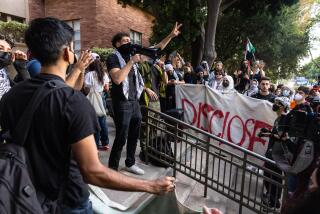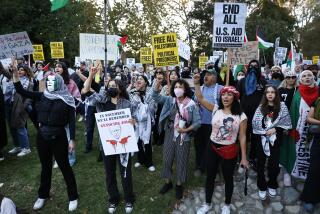L.A. joins nationwide campaign against gun violence with March for Our Lives rally
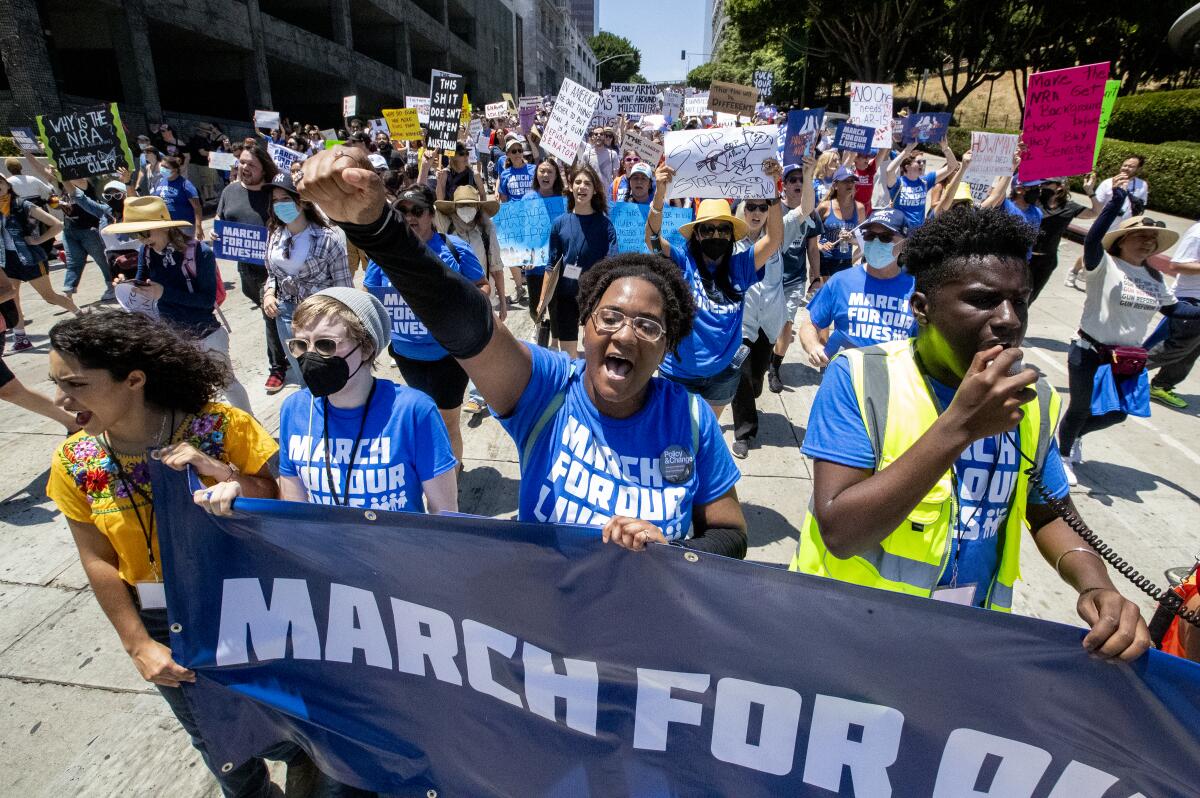
Nick Nyein walked down Spring Street as the March for Our Lives L.A. drew to a close at City Hall Saturday, sweat dripping down his forehead, neck and back.
The 18-year-old knew the day would be hot — as one of three co-organizers of the L.A. march, it was his job to know— but that didn’t make it any more bearable.
But when he returned to the stage and surveyed the crowd, he saw how many people showed up after a slow start to the day. There were hundreds of raucous marchers.
Passing cars honked their horns, and drivers raised their fists in support. People waiting at a nearby bus stop yelled and joined the crowds chanting, “No justice, no peace.”
“This,” Nyein said, his voice breaking, “is all worth it now.”
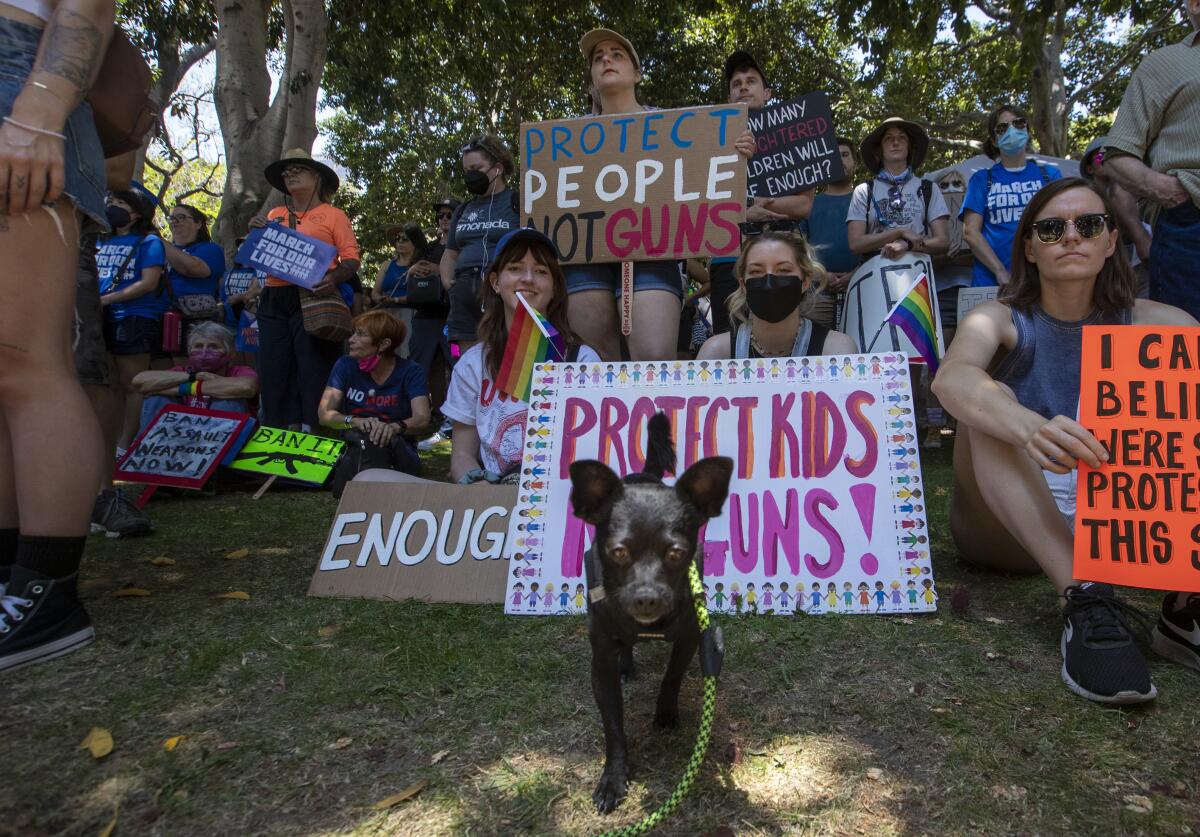
Over 1,000 people gathered around City Hall downtown for the student-led march against gun violence, prompted by recent mass shootings, including one at an elementary school in Uvalde, Texas, and another at a supermarket in Buffalo, N.Y., that together killed 31 people.
The L.A. March for Our Lives rally was one of hundreds that took place across Southern California and the nation Saturday in solidarity with a flagship march in Washington, D.C. The movement emerged after the 2018 shooting at Marjory Stoneman Douglas High School in Parkland, Fla., that left 17 people dead.
Just a few hours before the march in L.A., thousands of people streamed to the National Mall for the highest-profile demonstration to mark a renewed push for gun control. Cities including New York City, Atlanta and Chicago followed in suit.
In Los Angeles, organizers, gun violence survivors and gun control advocates rallied the crowd before the march to City Hall.
March co-organizer Shaadi Ahmadzadeh, 19, called for universal background checks, an increase in the age for legal gun possession from 18 to 21, and a ban on assault weapons and high-capacity ammunition magazines.
“I remind you,” she said, “this movement here is led by students — not by politicians — by students like me.”
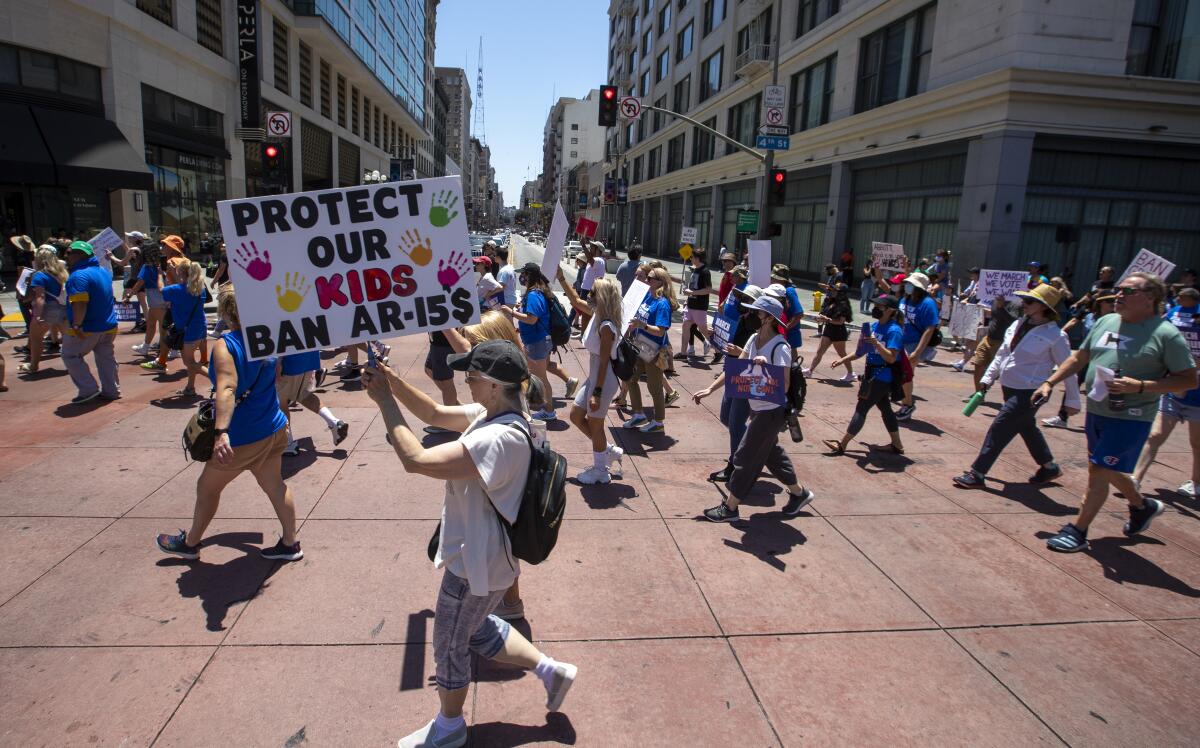
Twitch streamer Hasan Piker told the crowd that he shoots guns but does not think anyone needs an AR-15. And, he said, he’s tired of Congress’ inaction.
Mia Tretta, 17, who survived the 2019 shooting at Saugus High School, talked about losing her best friend, Dominic Blackwell. She said loopholes in the law had allowed a minor to obtain a ready-to-assemble firearm and kill her friend.
“Our generation has grown up watching these horrific shootings unfold,” said Cameron Kasky, 21. “And we see the same cycle repeat itself: mass murders, specifically with an AR-15. Public outrage, thoughts and prayers, rinse and repeat.”
Kasky is a survivor of the shooting at Marjory Stoneman Douglas High, and helped organize the first nationwide March for Our Lives protest.
There was a sense of hopelessness in his voice, though — a recognition that there are fewer demonstrators around the country than there were in 2018, and a fear that people believe that nothing will change.
Kasky said he doesn’t blame anyone; he just wants the anger to still be there, and he wants politicians to be as uncomfortable going out in public as children are going to school.
“Don’t march because you think that the Senate is going to pass anything,” he said, his voice rising. “March to show them how angry we are. March to show them that we are not going to stop until they do what we demand.”
The U.S. House passed a bill last week that would enact some of the demonstrators’ desired reforms — raising the minimum age limit for buying a semiautomatic rifle from 18 to 21, and prohibiting the sale of ammunition magazines with a capacity of more than 15 rounds. But the measure has almost no chance of passing the Senate and becoming law.
The lawmakers took the action after a House committee heard testimony from recent shooting survivors and their family members, including an 11-year-old girl who covered herself with a classmate’s blood to play dead and avoid being shot at the Uvalde elementary school. Nineteen children and two teachers were killed in the May 24 attack, which also left 17 wounded.
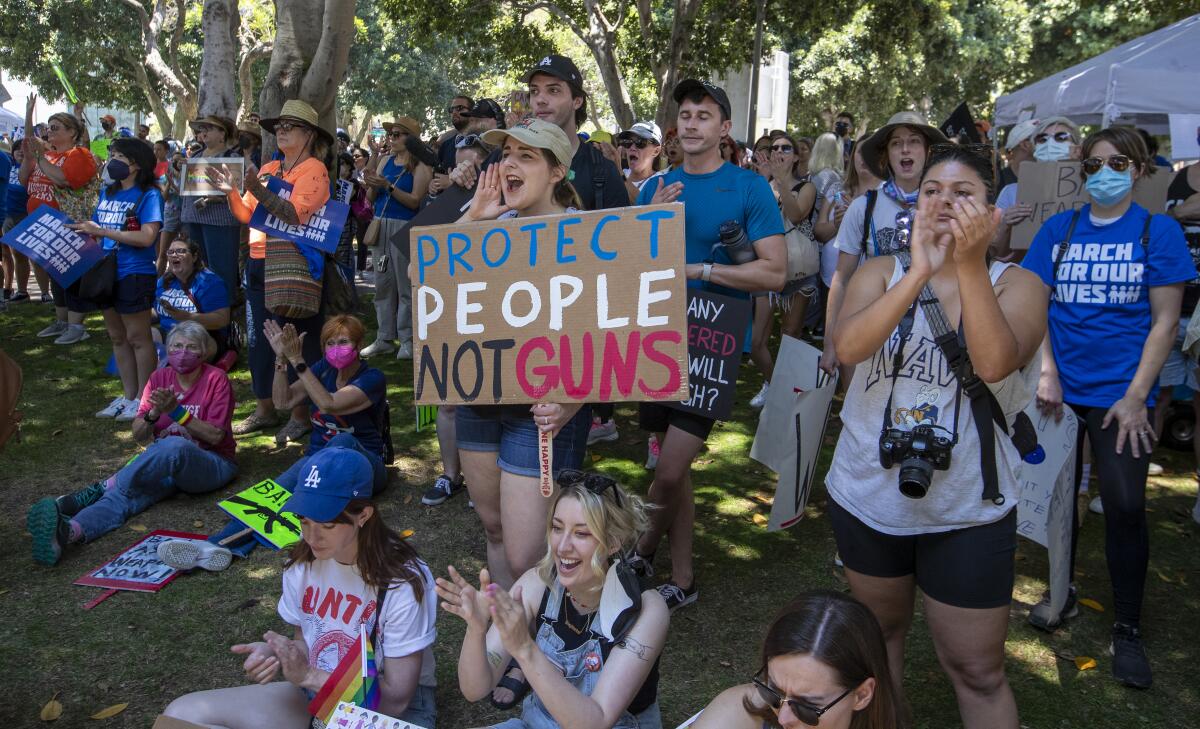
March for Our Lives L.A. organizers said they wanted this march to be specific to the region and the gun violence experienced here. Though California has some of the strictest gun laws in the nation, gun violence still affects more than 1,400 people a year.
That’s how many survived shootings in L.A. in 2021 — the second year in a row in which gun violence has increased in the city. There were 400 people killed in L.A. last year, marking a more than 50% increase in homicides since 2019.
Marchers yelled, “Whose streets? Our streets,” holding up signs with messages including, “A well-regulated militia doesn’t kill children” and “We’re done taking bullets for Congress.”
Erin Barker, 23, said she lost a family member in a drive-by shooting, and another relative survived a mass shooting at Northern Illinois University. She has been coming out to protest since she was 18.
“I grew up watching and hearing about these mass shootings. It hit close to home when Sandy Hook happened; it hit closer to home when the Pulse nightclub shooting happened, as a gay person,” Barker said. “The problem is you’re not listening. The problem is that people are continuing to die on your watch.”
Bree Pavey’s shirt commemorated the victims of the 1999 Columbine High School shooting in Colorado. She said she had met many survivors of the shooting since 2009 as an artist on the theater production “The Columbine Project.” The work has left an imprint on her heart, she said, and she sees Columbine as a turning point for gun violence in this country.
As the demonstration came to a close, co-organizer Anna Pham said that although while the day was a success, she worries that if people do not go home from the march and continue to reach out to politicians, this momentum will fizzle out.
“This situation itself is so helpless that if we stay back and just look and just feel helpless, we will feel even worse.” Pham said.
“But if we try to do something about it,” she said, “we channel our energy, or we channel our desperation into something so that we feel that we’re doing something. And sometimes we do, and those moments when we have those victories, no matter how big or small, it makes it all worth it.”
Times staff writer Alex Wigglesworth and the Associated Press contributed to this report.
More to Read
Sign up for Essential California
The most important California stories and recommendations in your inbox every morning.
You may occasionally receive promotional content from the Los Angeles Times.
